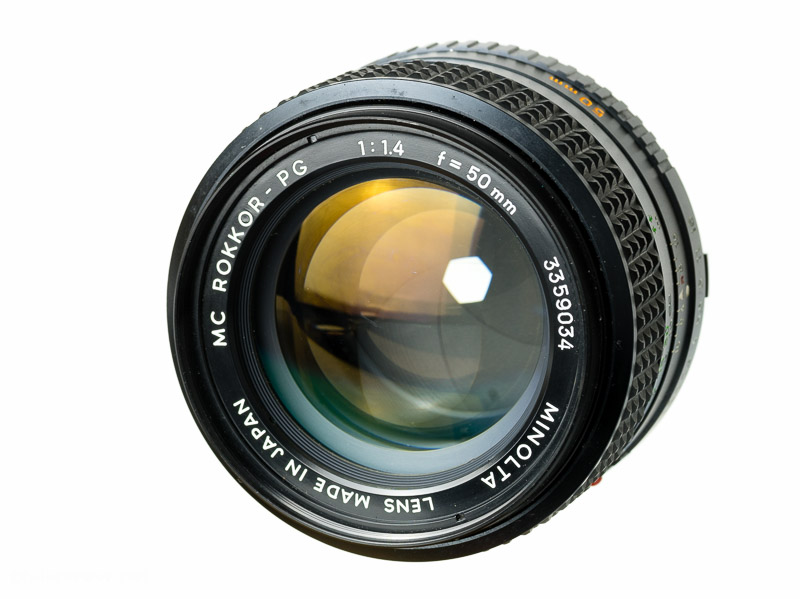
There is an abundance of manual 1.4/50 lenses available, is there anything which makes the Minolta MC 1.4/50 special? That’s the question I try to answer in this review.
Sample images
Images are linked to the full resolution, just click on them.
Specifications
-
- Diameter: 65.2 mm
- Length: 46 mm
- Weight: 305 g
- Filter Diameter: 55 mm
- Number of Aperture Blades: 6
- Elements/Groups: 7/5
- Close Focusing Distance: 50 cm
- Mount: Minolta SR
The Minolta MC 50mm 1:1.4 usually sells for around $40-80 at ebay.com (affiliate link).
In Germany you can buy it for 50-85€ at ebay.de (affiliate link).
Also check out my Minolta SR-mount adapter guide.
Versions
The Minolta MC 1.4/50 was released in 1973 and remained in production until 1977.
The mechanics and optics remained unchanged but minor cosmetic changes happened. In 1974 on the north American market ROKKOR became ROKKOR-X in orange and at the same time the index was changed from a painted red dot to a red plastic bead in all markets
(Thanks to Maury Jacks for additional information.)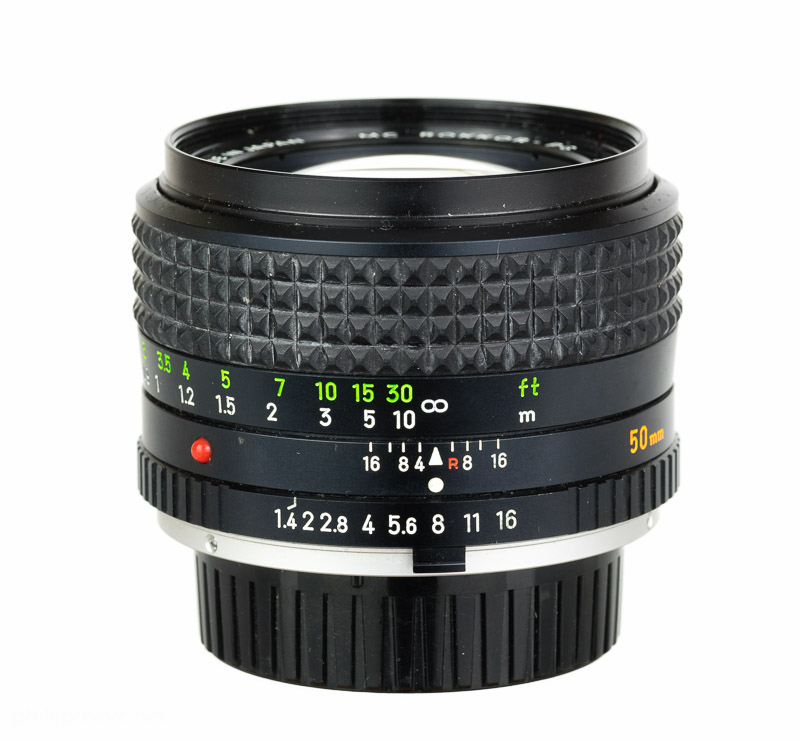
It’s successor was the MD 50mm 1:1.4 which is 65g lighter and a bit shorter.
Build Quality
Typically for a Minolta MC lens built quality is great, it doesn’t get much better than this. The lens is made of nothing but metal and glass (well and some rubber for the focusing ring but it has aged well). All markings are engraved.
Size, Weight and Handling
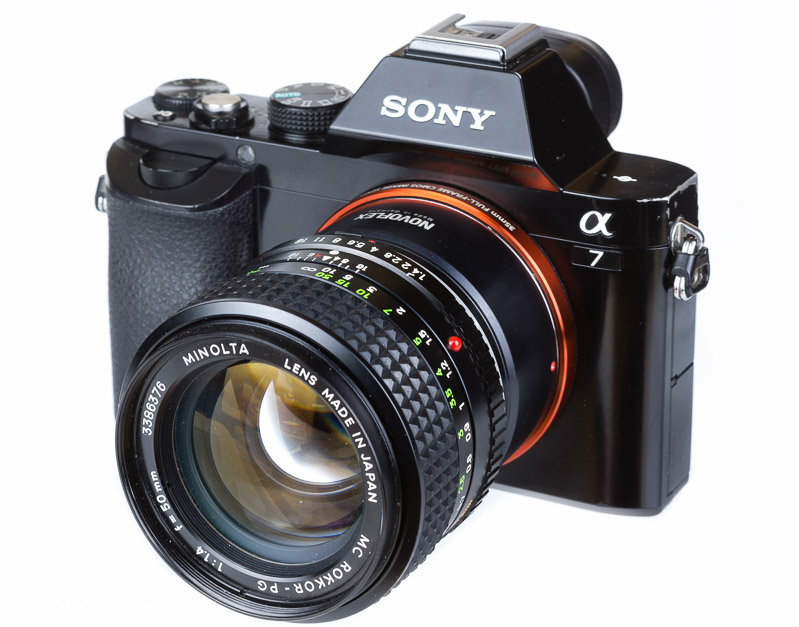
The Minolta MC 1.4/50 is about as large and a little heavier than your average 1.4/50. It is well balanced on the Sony a7 but it feels like a substantial lens.
The focusing ring is a pleasure to use because it has just the right resistance and travels about 90 degrees from 0.5m to 1m and a further 80 degrees to infinity.
The metal made aperture ring of the has a good resistance and distinctive stops. There is no stop between f/1.4 and f/2, then it stops down half steps to f/16.
Lens Hood
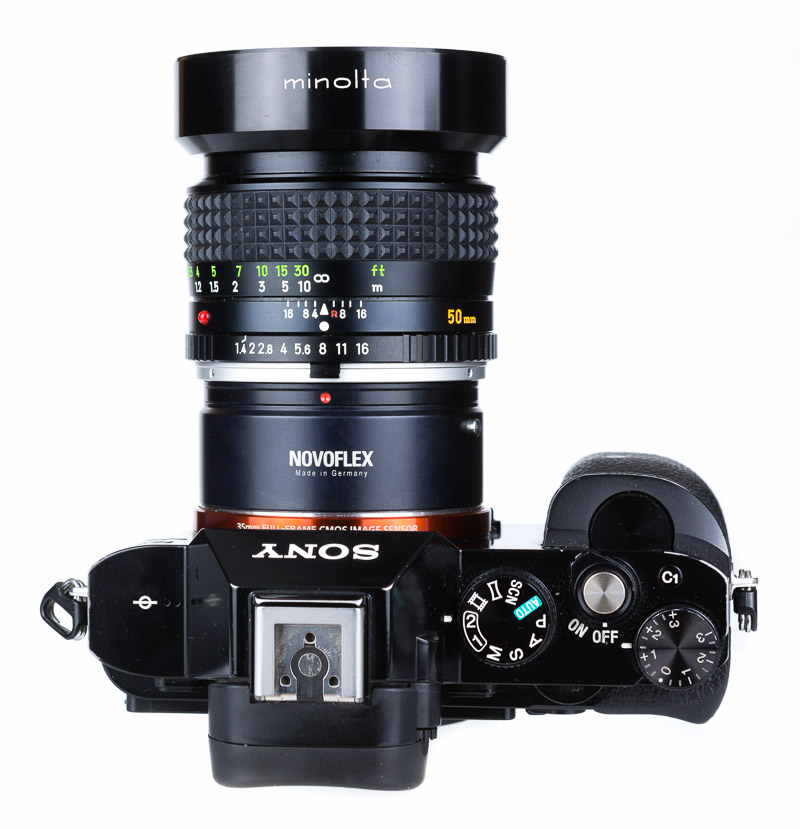 The original lens hood is made from metal, on the inside it is flocked with a velvety material. Since it is very solid and because it isn’t too large I usually leave it on the lens and put lens the lens in my camera bag without a front cap which speeds up operation.
The original lens hood is made from metal, on the inside it is flocked with a velvety material. Since it is very solid and because it isn’t too large I usually leave it on the lens and put lens the lens in my camera bag without a front cap which speeds up operation.
Filters
The 55mm filter thread is made from metal.
The front of the lens does not rotate.
Image Quality
Vignetting
At f/1.4 vignetting is significant, at f/2 it is reduced but still noticeable and from f/2.8 a no-issue.
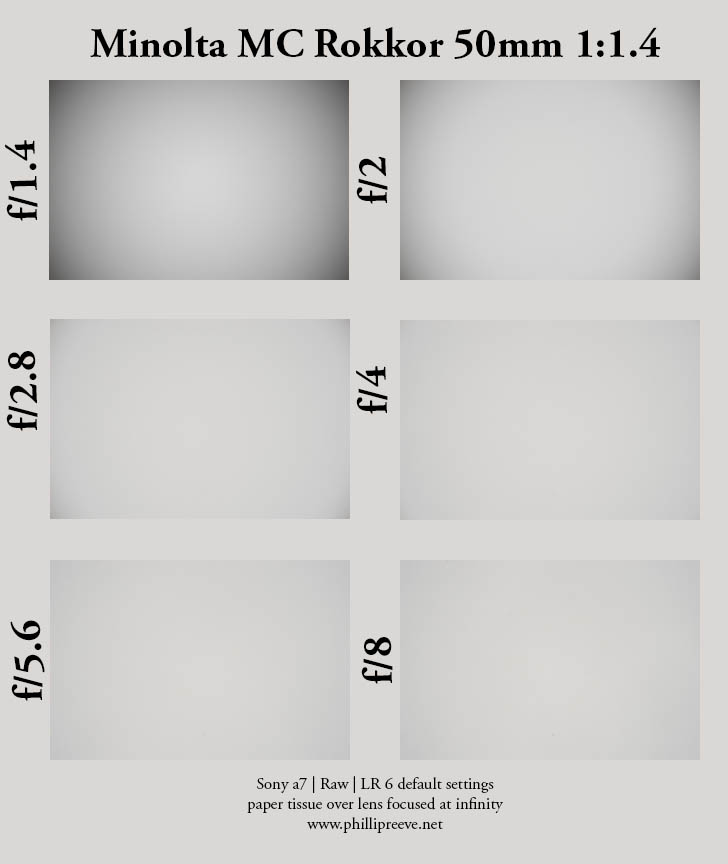
Flare Resistance
Typical for a Minolta the MC 1.4/50’s flare resistance is nothing to write home about.
Ghosting isn’t hard to provoke:
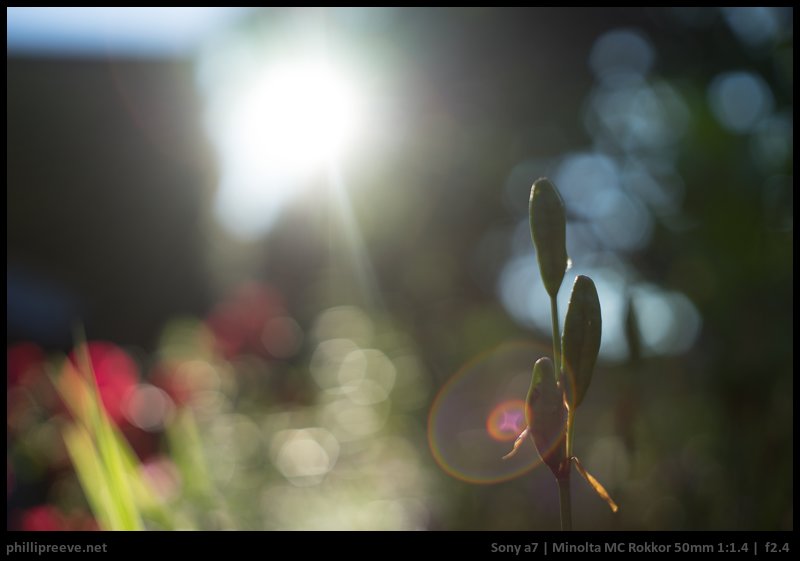
Veiling flare is rather strong and robs the image of contrast:
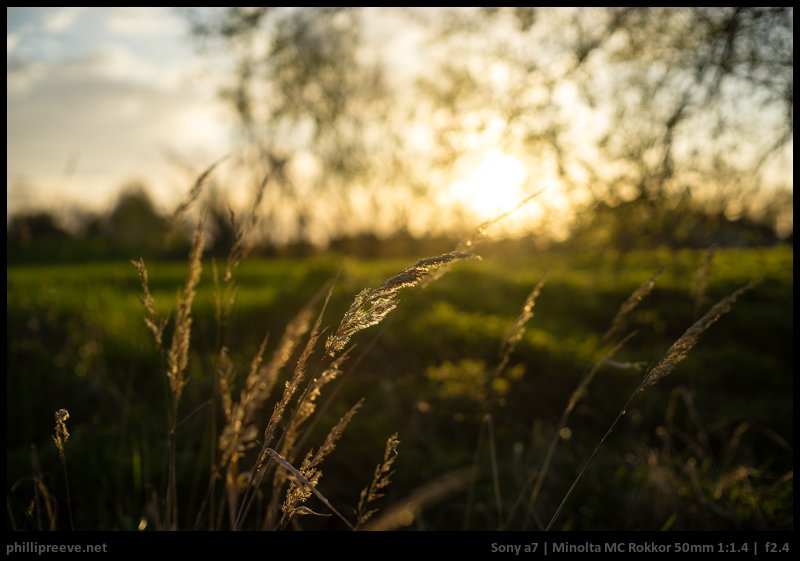
Distortion
The lens shows a small amount of barrel distortion.
Chromatic Aberrations
There is a little bit of lateral CA. I would say the performance is average for a 50mm.
There is quite a lot of longitudinal CA. Again an average performance for a 50mm. But also much more expensive 50mm lenses struggle in this aspect.

Bokeh
The Minolta MC 1.4/50 doesn’t have the smoothest bokeh but it isn’t bad either.
At f/1.4 there is a pretty strong outlining effect and the cat’s-eye effect is prominent as well: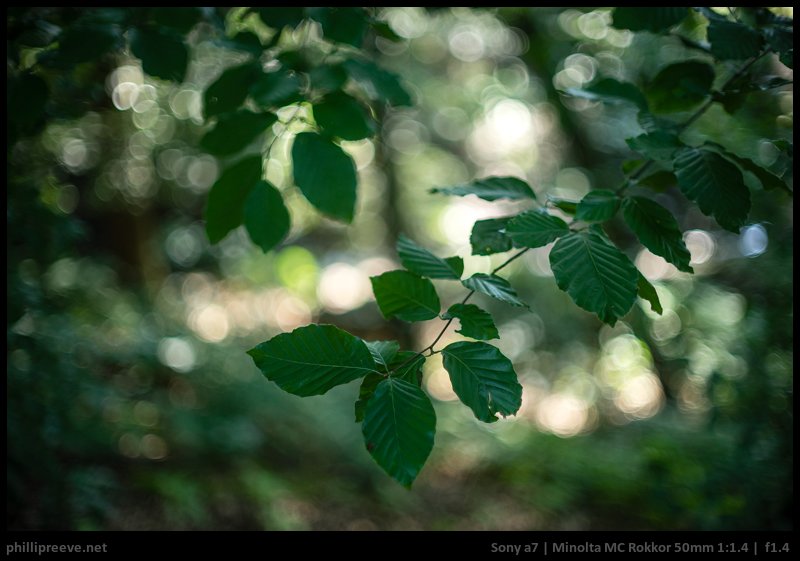
Here is a worst case scenario: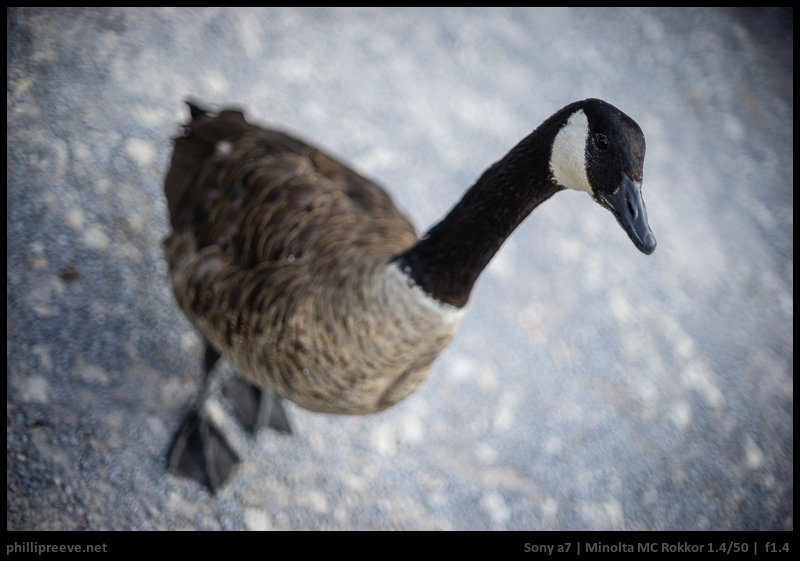
At f/2 the outlining effect is much less annoying but still visible, especially outside of the center.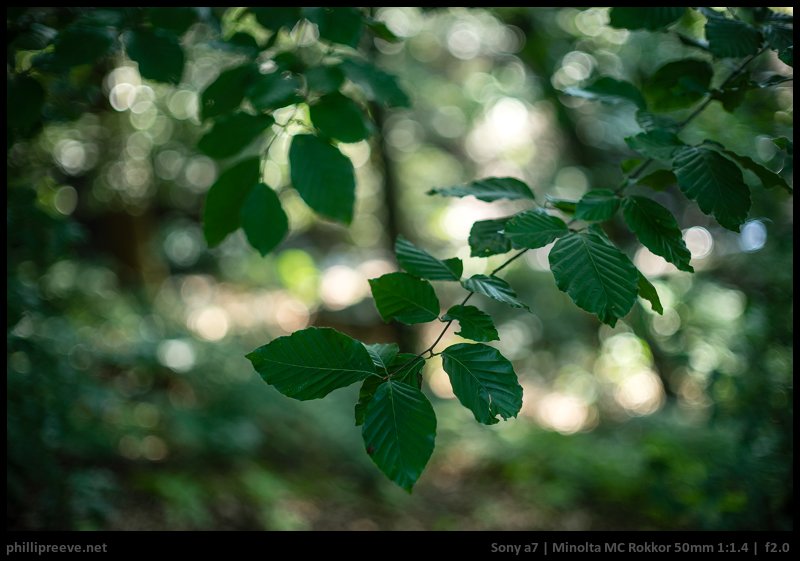
My preferred aperture is f/2.4. Here oof highlights are rendered quite smooth and the shape of the aperture isn’t too obvious.
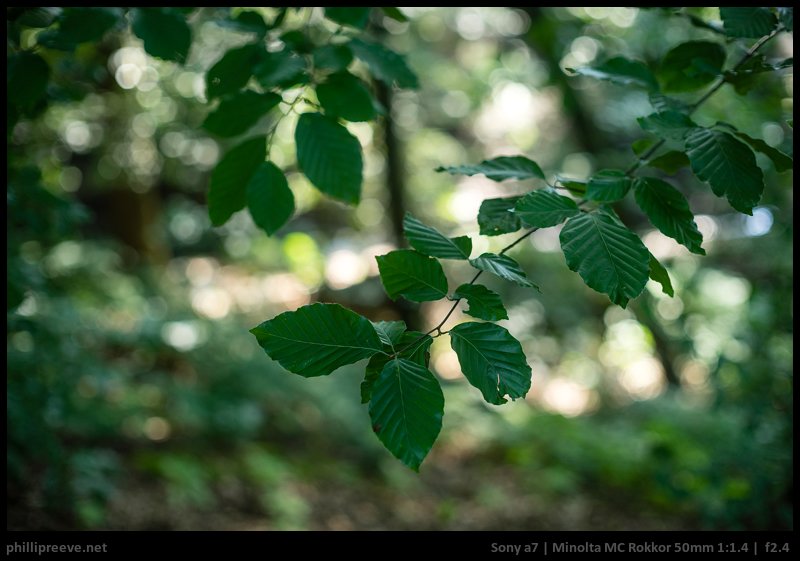
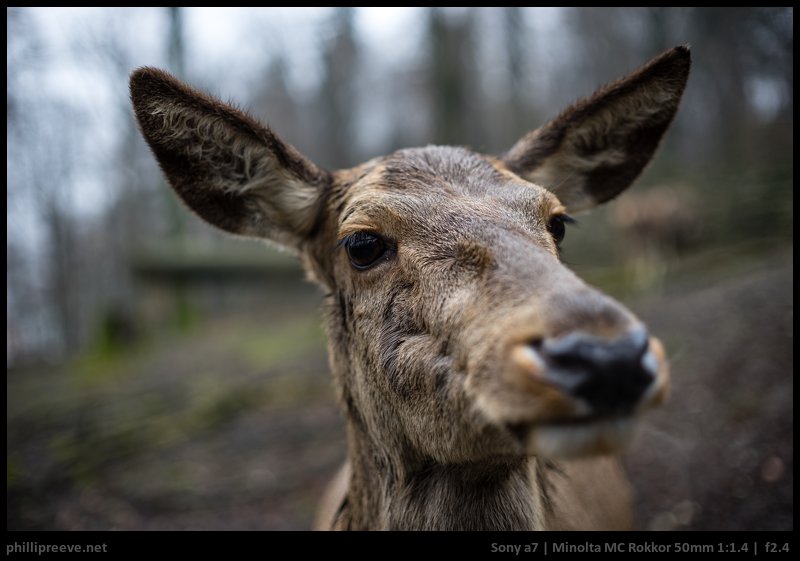
At f/2.8 the hexagonal shape of the aperture is pretty obvious and a bit annoying.
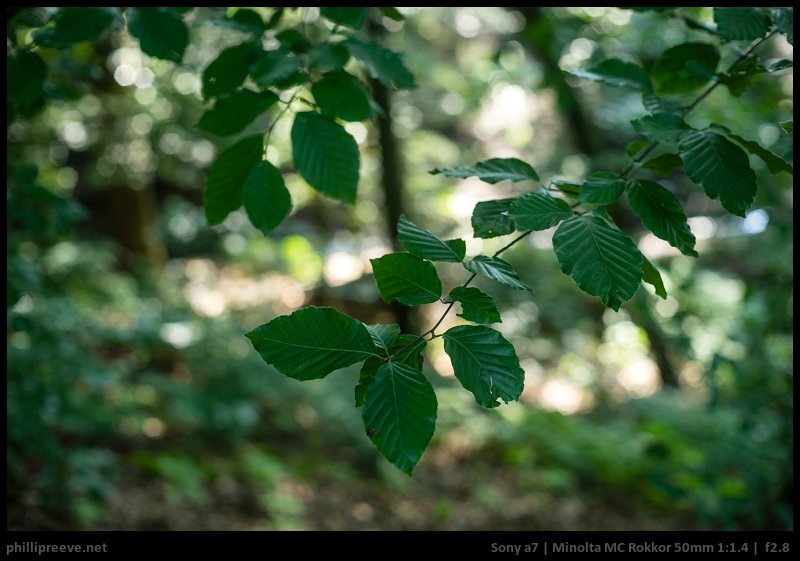
Of course bokeh depends a lot on the background, in scenes of low contrast and with backgrounds farther away you can get smooth bokeh even at f/1.4 and especially at f/2.0.

Sunstars
The Minolta MC 1.4/50 only has 6 aperture blades so sunstars only produce 6-pointed stars. From f/11 they are reasonably well defined but they don’t come close to the nice sunstars of lenses like the Zeiss Loxia 2/50.
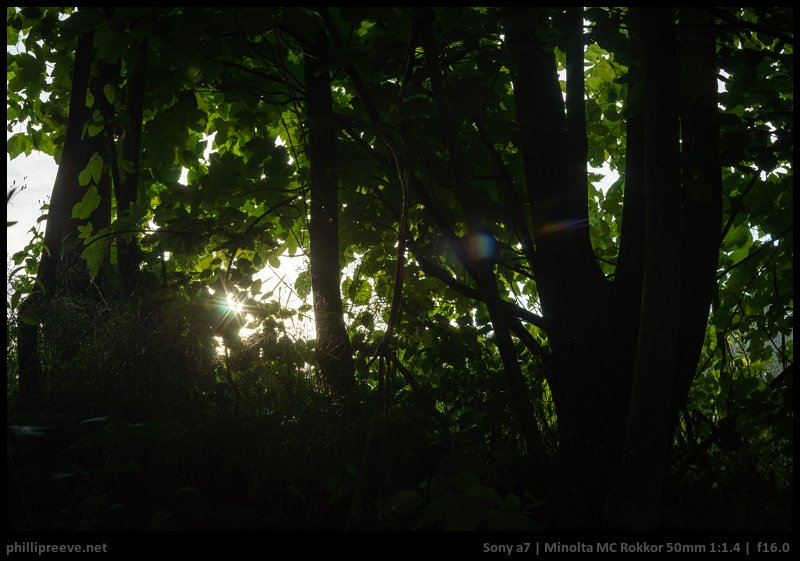
Sharpness

You can find the full resolution test images in the Minolta MC 1.4/50 flickr set.
f/1.4: Good resolution in the center, still decent midframe area and bad in the corners. Contrast is quite low.
f/2: Performance is much improved and f/2 is my go-to aperture for portraits.
The center shows good sharpness but there sharp area is quite small.
f/2.8: Any softness is gone, contrast and resolution are excellent in the center and midframe region, the corners only improve a little.
f/4: A significant improvement in the midframe region and further, corners are better but still rather soft.
f/5.6: Excellent across the frame, only the extreme corners are a tad softer.
f/8: Excellent across the frame.
f/11: A little softer due to diffraction.
For me the most important stops are:
- f/2.4 for portraits and images where it is really sharp in the relevant area and you can still blur the background nicely.
- f/8 for landscapes where everything is tack sharp.
Close Focus Performance
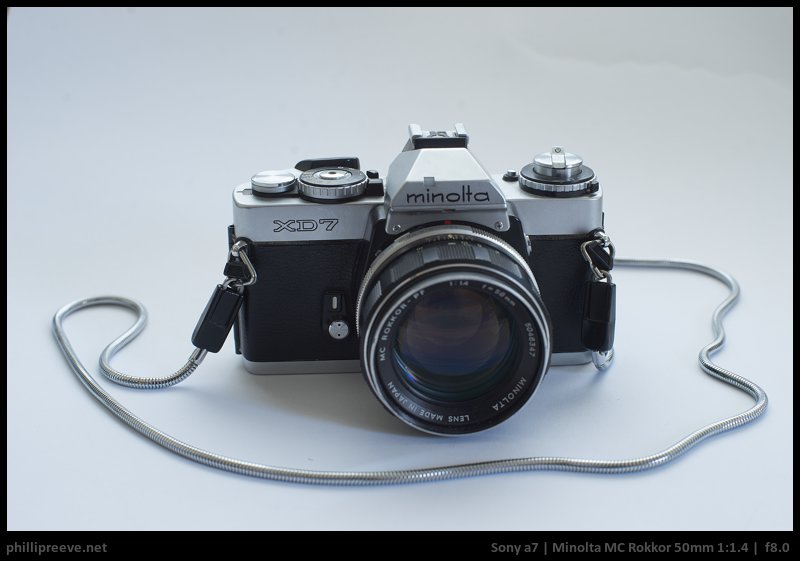
The Minolta MC 1.4/50 has a close focusing distance of 50cm which results in a reproduction ratio of about 1:8 which is a little below average for a 50mm lens.
The Minolta does not feature floating elements so performance suffers quite a bit at shorter distances. You won’t reach the same level of performance as at longer distances, no matter the aperture you are using. Results are good enough from f/2.8 but the level of CA is quite high, even in the center. My Minolta MC 3.5/50 macro performs much better here.
A full aperture series can be found in my Minolta MC 1.4/50 flickr set.
Alternatives
Minolta MC 1.2/58: Quite a bit smoother bokeh and 8, not just 6 aperture blades make it a superior lens when bokeh is important. Sharpness is similar, the 1.4/50 might be a tad better. It also costs about 6 times as much and is nearly 150g heavier.
Minolta MC 1.7/55: Not as sharp at wider apertures but it has nicer bokeh and is a bit smaller.
Minolta MD 2/50: Worse bokeh but it is sharp across most of the frame from f/2, very small and only weights half of the MC 1.4/50. This is reflected in the build quality though. It is also free of lateral CA and distortion which the 1.4/50 is not.
Zeiss C/Y Planar 1.4/50: The Planar has more effective coatings which results in a much better flare resistance and higher contrast at wider apertures. The Minolta is a lot cheaper though.
Canon nFD 1.4/50: The Canon is quite a bit sharper at f/1.4 and f/2 but and it doesn’t feel nearly as solid. Price is similar.
Zeiss Loxia 2/50: A modern lens which is sharp across the frame from f/2 with high contrast and exif transmission. Bokeh is the only real weakness I found. Oh an the price of course.
Sony FE 1.8/55 ZA: The Sony is super sharp from f/1.8 and it has much smoother bokeh. Manual focus is a pain in the a** though and it is expensive.
Conclusion
good
|
average
|
not good
|
Like any classic 50mm lens the Minolta has decent resolution and low contrast at f/1.4, bokeh is quite busy und vignetting quite strong. You still can take nice pictures at this aperture but I would avoid broad daylight and look for darker scenes without busy backgrounds.
There is a very significant improvement when it is stopped down to f/2 where it is quite sharp in the center of the image and the bokeh depends a lot on the situation. Sadly the MC 1.4/50 has only six aperture blades wich is detrimental to the bokeh, but since they are somewhat rounded the effect isn’t too strong at f/2 and f/2.4.
Stopped down to f/2.8 sharpness is excellent across most of the frame but you need to stop down to f/5.6 for excellent across the frame performance.
Flare resistance is a weakness of this lens; both veiling flare and ghosting can be bothersome.
Typically for a Minolta MC lens build quality is great, and I see this as one of the stronger arguments for this lens, it is just satisfying to use such a well made lens.
I think the Minolta MC 1.4/50 offers really good value, for about $80 you get a lens which is built to higher standards than today’s $1000 lenses. Optically you have to live with a number of compromises but most of the time you will be able to get really good results.
All in all a versatile lens which will give you very good results for most application, at least if you stop it down a bit. Using it is a joy because it is so well made. Compared to other 50mm lenses the build quality and sharpness stand out. It offers great value.
The Minolta MC 50mm 1:1.4 usually sells for around $40-80 at ebay.com (affiliate link).
In Germany you can buy it for 50-85€ at ebay.de (affiliate link).
Also check out my Minolta SR-mount adapter guide.
If this review was helpful to you, please consider using one of my affiliate links. I will earn a small commission on your purchase and it won’t cost you anything. Thanks!
Minolta MC Rokkor 1:1.4 50mm Sample Images
All images are processed in Lightroom from Raw. Many more full resolution samples in my Minolta MC 1.4/50 flickr album.
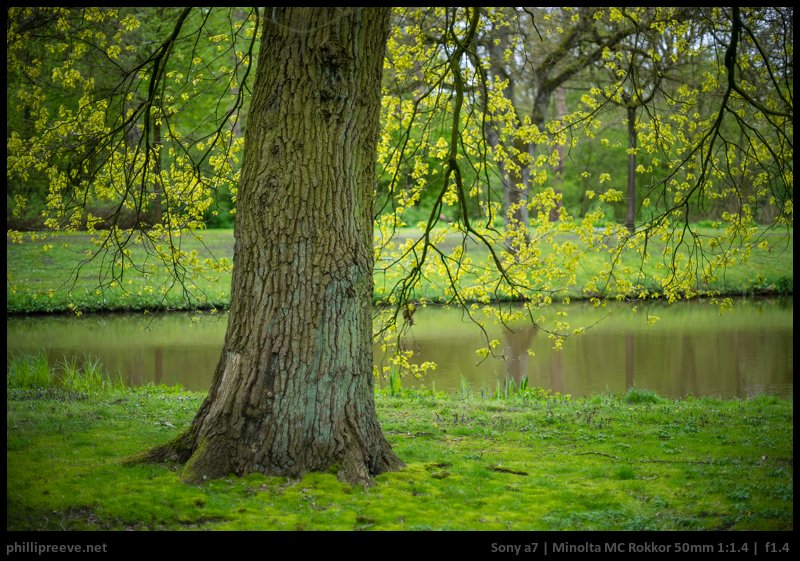
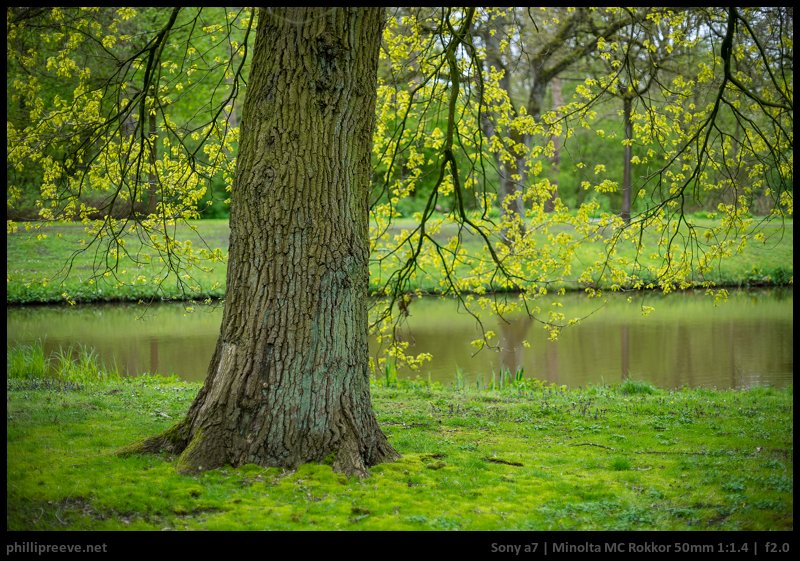
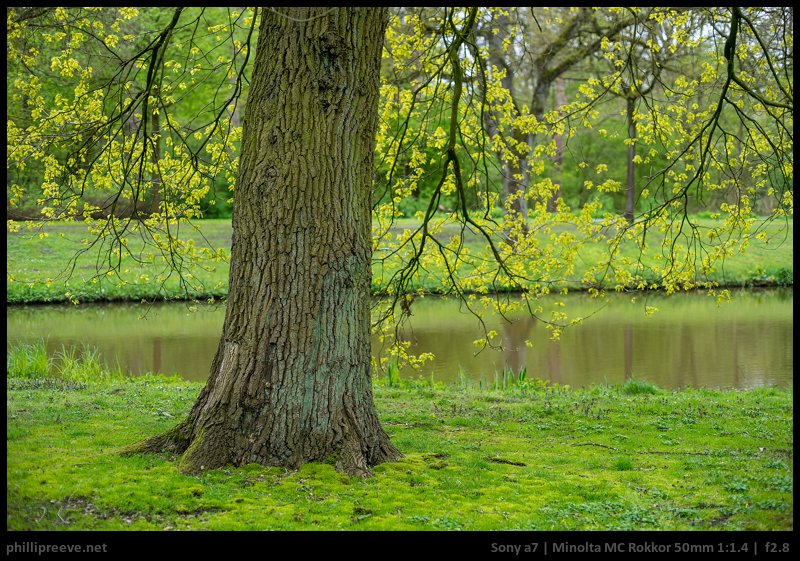
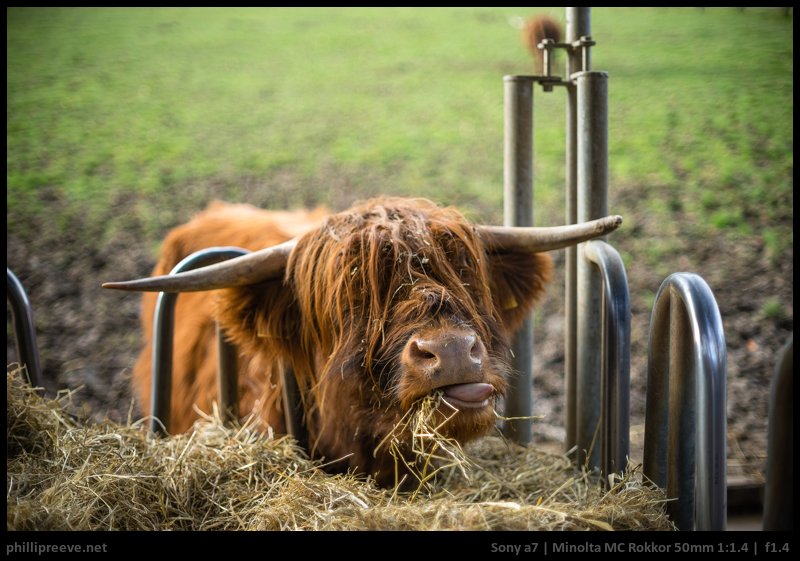
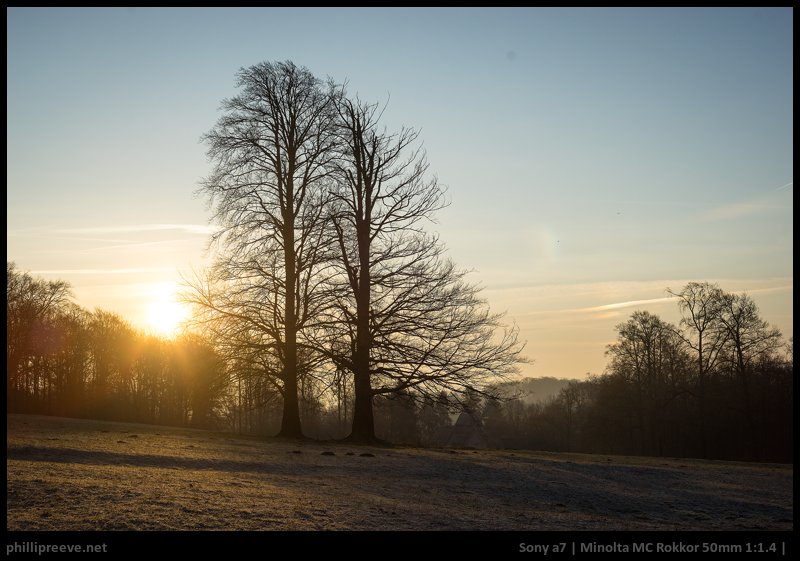
Further Reading
- Minolta Lenses on the Sony a7 – ratings, impressions and sample images
- My other Minolta MC/MD Reviews
- Affordable manual lenses for the Sony Alpha 7 series
- Manual lenses on the Sony a7 – A beginners guide
This site contains affiliate links. If you make a purchase using any of the links marked as affiliate links, I may receive a small commission at no additional cost to you. This helps support the creation of future content.
Latest posts by Phillip Reeve (see all)
- Review: Samyang AF 75/1.8 FE - April 12, 2021
- The FE-List now has 113 lenses on it - March 25, 2021
- 2020 – Year’s end review - December 28, 2020
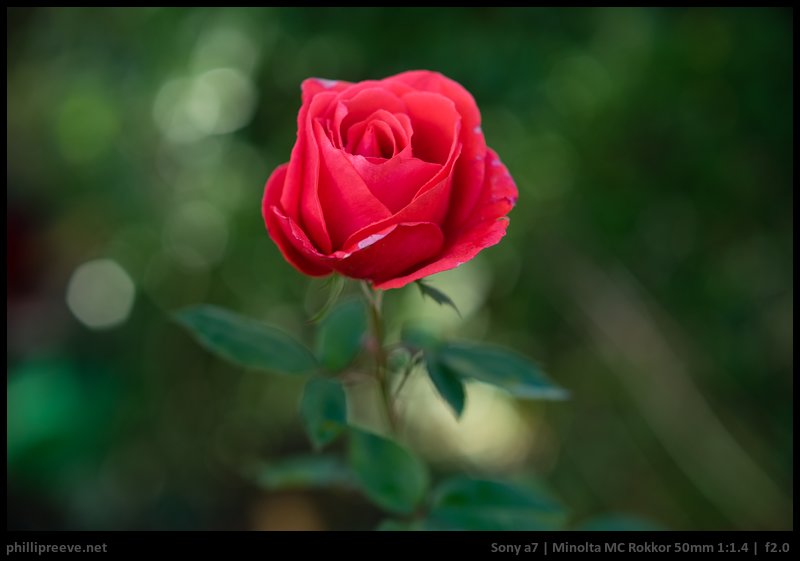
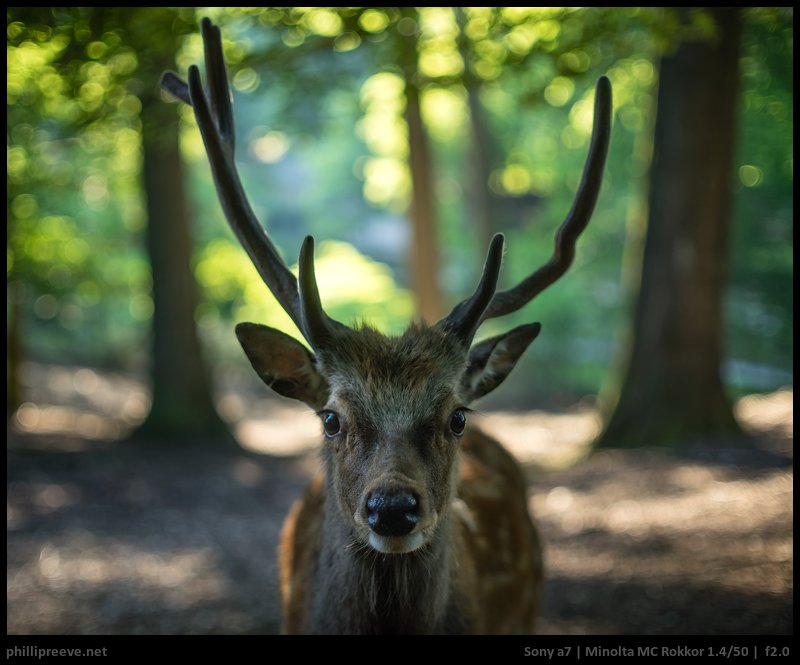
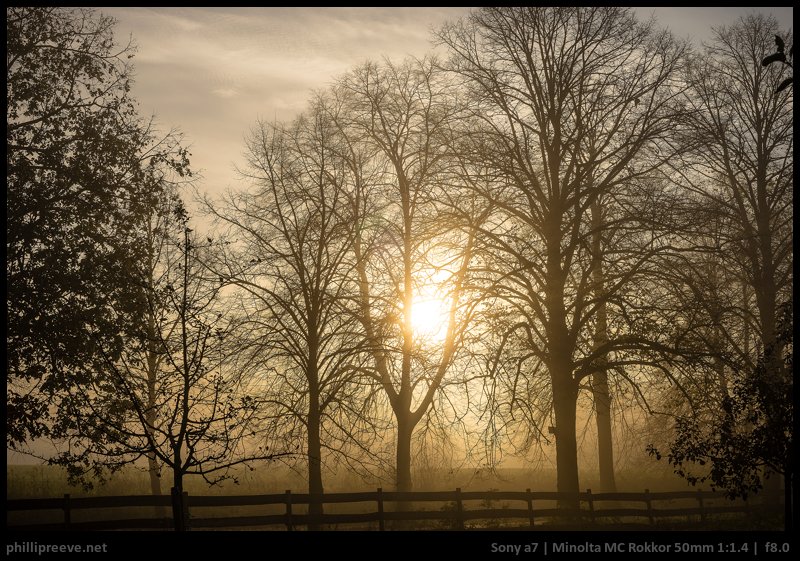


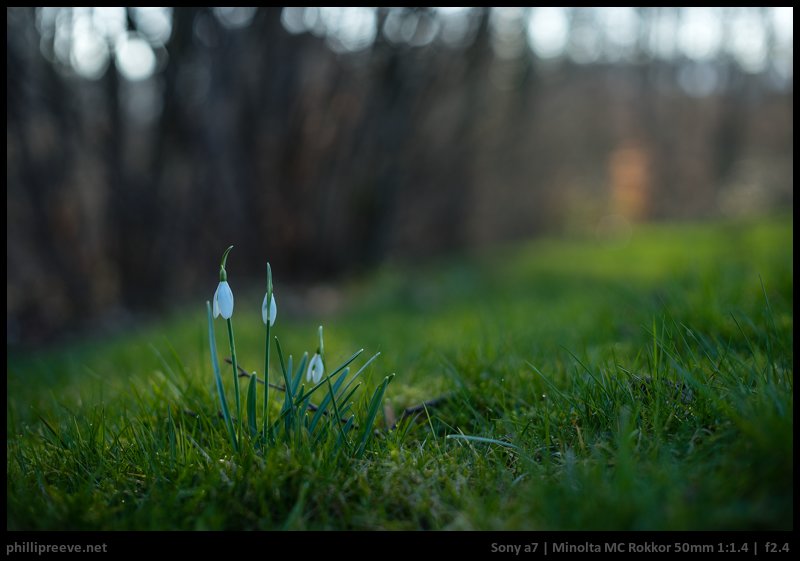
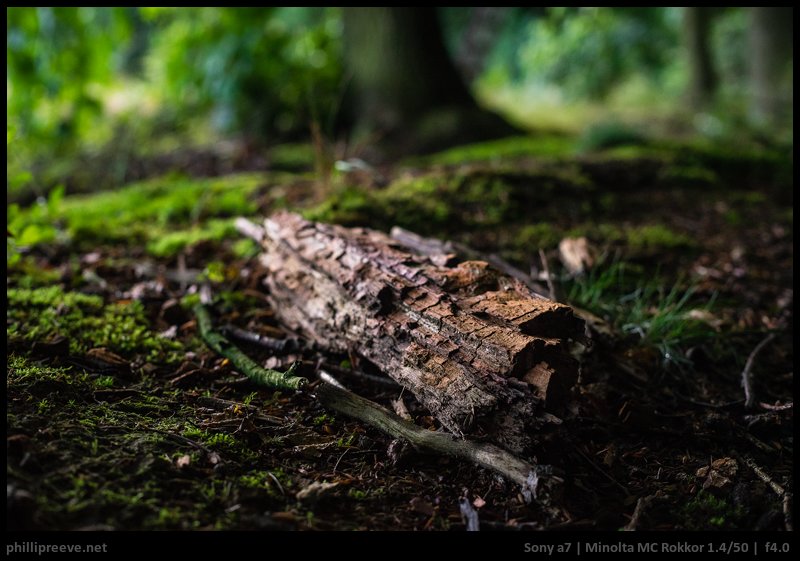
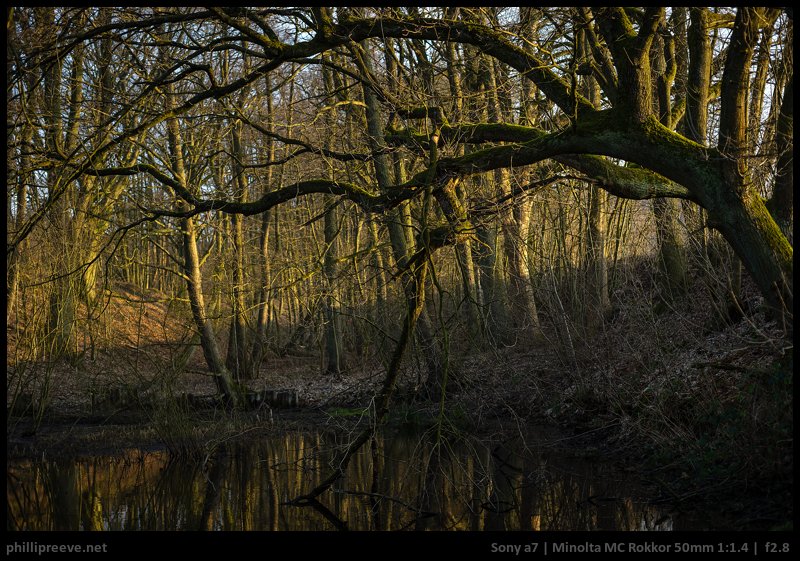
Thanks a lot for the great review. A while ago I decided against the Minolta and for the Canon FD 50mm 1.4, mostly because of the sharpness. I love to read the article and specially the alternatives.
The only lens I miss at the alternatives is the Sony FE 50mm 1.8, wich is way cheaper than the FE 55mm and because of that maybe more interesting for some.
Thanks again for your effort and work!
This was the first lens I ever had along with my Minolta XG-1 (my first SLR).
So, since I switched to Sony this year, after shoot with Nikons for long years, I decided to buy this lens again, and this is the first manual lens I have.
Well, I’m so disappointed with this lens, it’s so soft, maybe because I’m use to my Sony GM lenses, it could be, but I hope I would love this thing. I want a manual lens to do some portraits, but can’t do it, not with this lens.
Another problem I have is Focus Peaking, unfortunately I don’t think this thing is very accurate, the focus is always behind what I really aim when late I check on my computer.
Do you have any great (cheap) manual lens for portraits to suggest? I’d like to play around with some manual lens, go back in time, it was really fun, but I want a good sharp lens with good bokeh. Does modern lens got that much better or is just this one that is not that good. I had a Nikon 50mm 1.8 that would humiliate this one if I still had it.
Thanks Phillip.
At which aperture did you use it? At f/1.4 it is certainly soft. At f/2 it is much sharper but still not great. By f/2.8 though it should be competitive with your GM lenses.
“Sony FE 1.8/55 ZA: The Sony is super sharp from f/1.8 and it has much smoother bokeh. Manual focus is a pain in the a** though and it is expensive.”
totally agree its the best ~50mm lens in from the list.
but i totally not agree that manual focus with the FE 55mm is a pita. Its is by wire but it think its very responsive, fast, well dumped and there is auto magnification.
it think real manual focus can a pita, stopped down in low light,
or if you have very small sharp area at ~1.4.
here you will love this lens.
Well I used the Sonnar quite a lot for a month and the manual focus was the main reason why I sold it. Taste differs I guess.
I’m somewhere in the middle. I still use the FE55/1.8 but I really wish it were MF ;o)
The coatings are the biggest draw back with these older MC/MD lenses I think. OK with the sun out of frame if you remember to flag the lens, but with the sun in shot, or unflagged it’s hard or impossible to control the flare.
I wonder how your Pentax SMC 1.4/50 fares in that respect? My C/Y 1.4/50 is a lot better than the Miolta but not perfect.
Any thoughts on how the MD version of this lens stacks up against the MC reviewed here – if I’m not mistaken the MD version is a bit younger? Or is it built exactly the same?
(Thanks for your great work by the way, you helped convince me to buy an A7 and a bunch of manual lenses half a year ago: loving the experience as well as the results!)
It has been some time since I used a MD 1.4/50 so I can’t give you a really precise answer but I think they perform very similar. Build quality is a bit nicer for the MC though, especially when compare with the youngest MD.
Glad that you like manual lenses 🙂
Several ppl asked me this so I took a snapshot with the better of my MDs.
You can see a quick sample here with the Orange X 50/1.4 MD
http://goo.gl/q2PVPT
The Bokeh is a bit smoother in the later MDs–remember, with old Rokkors you have to get a decent condition lens.
There’s a ton of great vintage 50mm lenses, the MD Rokkors’ combination of smooth Bokeh and not-insanely-sharp glass make a great portrait lens, and a decent landscape lens at f5.6-8. But there’s some serious competition from modern lenses which are just sharper and have better micro contrast. Still, the 50 has a beautiful, soft, colorful look. Smooth. The 58 is a bit less sharp and contrasty, but has beautiful bokeh and is a great video portrait lens as the lack of contrast acts like a log curve.
Well, to be completely truthful, I actually hate having to manual focus. I’m lazy that way. But I do like the super low prices, allows me to shoot with a class of lenses that I otherwise NEVER would have considered buying. Super sharp + oodles of character. I actually _like_ the contrast loss at low f numbers and the low contrast haziness with the sun in the frame that you have with these old lenses. Nice sixties / seventies look. Makes the images come alive!
Pop Photo did a test of 32 “normal” lenses in 1976, the Minolta MC 50/1.4 was one of the best for center sharpness. I modified one to rangefinder couple for the Leica. Well worth it.
Another “forgotten, inexpensive” lens- the Konica 50/1.7. Also converted one for the Leica. Close to a Summicron for performance, about 1/20th the price. Sharper than the Konica 50/1.4, only 1/2 stop difference.
Is sharpness the only difference between the Konica Hexanon 50mm 1.4 and 1.7?
Phillip, how similar are all of these 50mm lenses for landscape? I know the standard wisdom is “all 50mm lenses are good at f/8”. I suppose my major concerns are corner sharpness and CA for landscape (maybe lens flaring?). Is there an image quality difference to be had, going with the expensive FE 55mm lens? Ignoring build quality for a second, which of the old MF lenses would be best?
(Thanks so much for all these wonderful reviews.)
the difference is minor. I think I would go for a lens with good flare resistance like the Zeiss 1.4/50
I remember your review. I’ll take a look at it again. Thanks!
Also, my grandfather gave me his old Chinon 55mm 1.7. I don’t know how good it is optically, but I bet you would love the build quality. It’s a solid chunk of metal, and heavier than any other prime lens I’ve ever held.
It is a pleasure to use the MD version of this lens. Wonder how it compares to the FE 50mm f1.8, though.
The FE 1.8/50 has a little smoother bokeh and very high contrast from f/1.8 but it isn’t one of the sharper 50mm lenses out there.
Thanks for the review! Do you know what adapter you would need to use this with a Canon 5D classic?
There is no such adapter because of the flange focal distance.
Hello,
I have one but unfortunately, the rear lens is broken.
I patiently look for another one in a poor condition but with a good rear lens to repair mine.
In the mean time, I was wondering if I could pick a rear lens from another model. Does anybody knows if this rear lens is the same on some other objective ?
Mine is from the 70s. I have shot thousands of images through this lens over 40 years. It has some major limitations that I think are it’s strong points. Mojo doesn’t come from perfection. This lens has tons…
I have most of the Minolta 50s and have done several tests. Compared to the MD version of the 50mm 1.4 lens, I found the MC 1.4 version to be very slightly sharper in the corners at f8. The MC is very sharp across the frame at f8. Regarding the 50mm 1.7 series, it was just the opposite at f8. The MD version just edged out the MC. Bokeh is very similar at 1.4 and f2 on all of them (with f2 being better in all cases). If you want a wonderful portrait lens with beautiful soft bokeh, try the MC 58mm 1.4 (second version) at f2. At 1.4, the center is a bit soft and the bokeh is busy, but wonderful changes occur when you set it to f2. I would love to see a test at f2 against the very expensive Nikon 58mm 1.4 version.
That’s really a great post, very informative…thanks a lot for sharing !
I was wondering, Could be possible to adapt this lens on a Canon 40D? Eventually somebody tested other vintage lenses on this camera?
There is no easy way to adapt to a Canon. Buying a cheap APS-C mirrorless with adapter will be a lot less effort than any attempt to mount it on a Canon with support from a dremel.
I recently bought an old used Sony reflexless camera and wanted to find an old manual zoom lens with a 50mm focal length to use with the camera, but they were really too many….I want a soft scorched outer and beautiful onion ring, I don’t know how to choose…
I think you need to be more specific what camera you bought and what kind of lens you are looking for (zoom lens or prime, max. aperture).
Do you know if this specific lens contains radioactive materials? I heard that the MDs all don’t, and that many of the MCs do – but this specific lens (MC 50mm 1:1.4, first produced in 1973) seems not to have any specific record one way or the other.